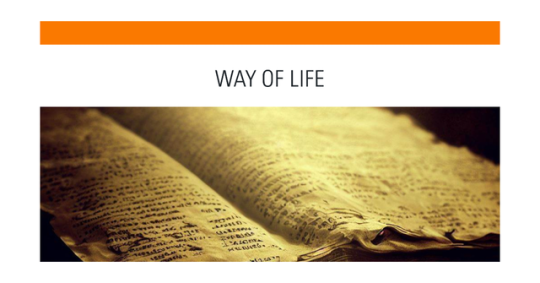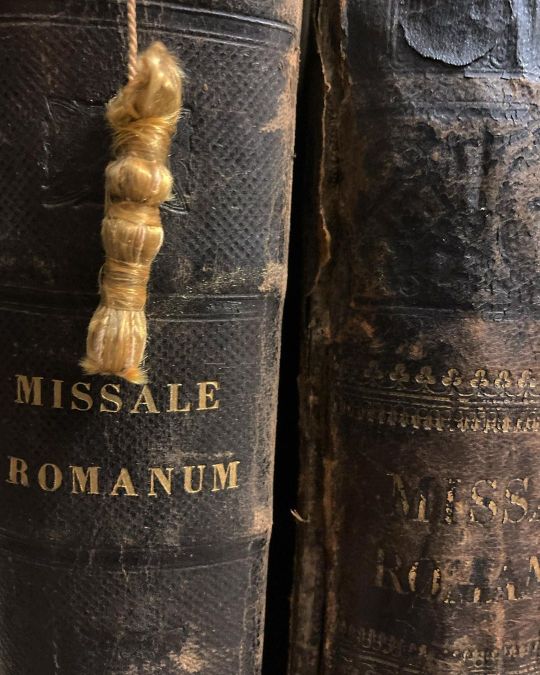#ReligiousTexts
Photo

New Post has been published on https://www.knewtoday.net/the-vedas-sacred-scriptures-of-hinduism/
The Vedas: Sacred Scriptures of Hinduism

The Vedas are the ancient and revered scriptures of Hinduism, embodying the spiritual wisdom and religious practices of the ancient Indian civilization. Composed in Vedic Sanskrit, these texts have been passed down through generations for thousands of years and continue to hold immense significance in Hindu religious and philosophical traditions.
The word “Veda” originates from the Sanskrit root “vid,” which means knowledge or wisdom. Thus, the Vedas are often regarded as a divine revelation, representing the profound insights and eternal truths perceived by ancient seers and sages.
Believed to have been composed between 1500 and 500 BCE, though their oral tradition may extend even further back in time, the Vedas consist of four main collections known as Samhitas. These collections are the Rigveda, Yajurveda, Samaveda, and Atharvaveda. Each Samhita serves a distinct purpose, encompassing hymns, prayers, rituals, and philosophical discourses.
The Rigveda, the oldest and most significant of the four, contains hymns dedicated to various deities, celebrating cosmic forces and natural phenomena. It offers a glimpse into the religious and social life of the ancient Vedic society.
The Yajurveda focuses on the performance of rituals and sacrifices, providing detailed instructions and verses to guide priests during religious ceremonies. It emphasizes the importance of correct recitation and the proper execution of rituals for spiritual attainment.
The Samaveda centers around melodies and chants derived from the Rigveda. It is primarily concerned with the musical aspects of rituals, elucidating the power of sound and rhythm in invoking divine energies.
The Atharvaveda encompasses a diverse range of hymns, spells, and incantations. It addresses practical aspects of life, including healing, protection, and averting misfortunes. It also delves into philosophical and ethical teachings.
Additionally, the Vedas comprise supplementary texts known as Brahmanas, Aranyakas, and Upanishads. The Brahmanas provide ritualistic explanations, the Aranyakas serve as texts for hermits and seekers in forest retreats, while the Upanishads delve into profound metaphysical and spiritual concepts, exploring the nature of reality, self, and ultimate truth.
The Vedas hold a central position in Hinduism and are regarded as the foundational scriptures upon which the diverse branches and philosophies of Hindu thought have been built. They have influenced religious rituals, philosophical schools, and ethical principles throughout history, shaping the religious practices and beliefs followed by millions of Hindus worldwide.
Today, the Vedas continue to inspire seekers of wisdom, offering profound insights into the nature of existence and guiding individuals on their spiritual journeys. They stand as a testament to the ancient heritage and rich spiritual legacy of Hinduism, inviting contemplation, devotion, and the pursuit of eternal truth.
Rigveda
The Rigveda is the oldest and most important collection within the Vedas, consisting of hymns and prayers composed in Vedic Sanskrit. It is considered one of the oldest religious texts in the world, with origins dating back more than 3,500 years ago.
Structure and Contents:
The Rigveda is divided into ten books, known as Mandalas, and contains a total of 1,028 hymns, or Suktas, attributed to different sages and seers known as rishis. These hymns are addressed to various deities, such as Agni (the god of fire), Indra (the king of gods and the god of thunder and war), Varuna (the god of cosmic order and justice), and many others.
The hymns in the Rigveda are written in poetic and metaphorical language, often using intricate metaphors, symbolism, and allegories. They express deep reverence for nature, cosmic forces, and the divine, seeking blessings, protection, and guidance from the gods.
Themes and Significance:
The Rigveda covers a wide range of themes and topics, including creation myths, praises to the gods, nature worship, cosmology, ethical values, social order, and the importance of rituals. It reflects the religious and social practices of Vedic society, providing insights into their beliefs, rituals, and worldview.
The hymns of the Rigveda offer a glimpse into the religious and spiritual experiences of the ancient Vedic seers. They express a sense of wonder and awe towards the natural world, seeking to understand the mysteries of existence and the relationship between humanity and the divine.
Philosophical Teachings:
While the Rigveda is primarily a collection of hymns, it also contains philosophical insights and contemplative reflections. Some hymns explore the nature of reality, the concept of Brahman (the ultimate reality), and the pursuit of knowledge and truth. They discuss philosophical questions regarding the origins of the universe, the nature of existence, and the purpose of human life.
Influence:
The Rigveda has had a profound influence on Hindu religious, social, and cultural practices. Its hymns and rituals form the foundation of the Vedic sacrificial ceremonies and have shaped the development of Hinduism over the centuries. The concepts and ideas found in the Rigveda have influenced subsequent Hindu scriptures, philosophical schools, and religious practices.
The Rigveda is not only a religious text but also a significant literary and historical document. It provides valuable insights into the early Vedic civilization, its language, social structure, and religious practices. Scholars and researchers continue to study and interpret the Rigveda to deepen their understanding of ancient Indian culture and religious traditions.
Overall, the Rigveda stands as a testament to the ancient wisdom, poetic brilliance, and spiritual quest of the Vedic seers, offering a profound glimpse into the religious and philosophical thought of the time and contributing to the rich tapestry of Hindu spirituality.
Yajurveda
The Yajurveda is one of the four main collections of the Vedas, the ancient scriptures of Hinduism. It is primarily focused on the performance of rituals and sacrifices, providing instructions, formulas, and verses for priests to follow during religious ceremonies. The Yajurveda is written in Vedic Sanskrit and is considered a crucial guidebook for priests or “yajurvedis” to carry out sacrificial rites.
Structure and Contents:
The Yajurveda is divided into two main branches or versions: the Krishna Yajurveda (Black Yajurveda) and the Shukla Yajurveda (White Yajurveda). The Krishna Yajurveda contains prose and verse portions mixed together, while the Shukla Yajurveda consists primarily of prose sections. Both versions contain rituals and formulas for the performance of sacrifices, but they differ in arrangement and presentation.
The Yajurveda contains hymns and mantras, referred to as “Yajus,” which are recited during various stages of sacrificial rituals. These mantras are precise and formulaic, serving as instructions for the priests regarding the actions to be taken, the offerings to be made, and the recitation of prayers and invocations.
Themes and Significance:
The Yajurveda emphasizes the importance of correct pronunciation and the precise execution of rituals. It provides detailed descriptions of various rituals, including the preparation of altars, the kindling of sacred fires, the offering of oblations, and the chanting of specific mantras. The rituals outlined in the Yajurveda were performed as acts of devotion, seeking blessings, and establishing a harmonious relationship between humans and deities.
The Yajurveda also contains philosophical and moral teachings. It emphasizes the interconnectedness of all beings and the importance of living in harmony with the natural and cosmic order. It highlights the concept of dharma (righteousness) and encourages ethical conduct, social responsibility, and spiritual growth.
Influence:
The Yajurveda has played a significant role in shaping Hindu religious practices and rituals. It served as a practical guide for priests in performing sacrifices and ceremonies, ensuring that rituals were carried out with precision and adherence to tradition.
While the Yajurveda is primarily concerned with rituals, it also contains philosophical insights and contemplations on the nature of the universe, the relationship between the divine and the mortal, and the pursuit of spiritual enlightenment. These philosophical aspects have contributed to the development of Hindu philosophy and provided a foundation for later texts, such as the Upanishads.
The teachings of the Yajurveda continue to be influential in contemporary Hindu rituals, especially in the performance of religious ceremonies, including marriages, fire sacrifices, and other religious rites. Its mantras and rituals are still recited and followed by priests and practitioners in traditional Vedic ceremonies.
In summary, the Yajurveda is a crucial Vedic text that provides detailed instructions and formulas for performing rituals and sacrifices. It holds significance in preserving ancient Vedic traditions, promoting ethical values, and guiding practitioners in their spiritual journey and devotion to the divine.
Samaveda
The Samaveda is one of the four main collections of the Vedas, the ancient scriptures of Hinduism. It is primarily focused on the musical aspects of rituals and sacrifices, containing a collection of melodies and chants derived from the Rigveda. The Samaveda is written in Vedic Sanskrit and is considered the earliest known musical text in the world.
Structure and Contents:
The Samaveda consists of a compilation of melodies and chants, known as Samans, which were sung during Vedic rituals. These chants are derived from the hymns of the Rigveda but are set to melodic patterns and rhythms. The melodies were sung by a group of priests called the Samavedins, who were responsible for the musical aspects of the rituals.
The Samaveda is organized into two main sections: the Purvarchika (First Archika) and the Uttararchika (Later Archika). The Purvarchika contains melodies from the Rigveda, while the Uttararchika comprises additional melodies specific to the Samaveda. Each section is further divided into chapters and subsections.
Themes and Significance:
The Samaveda places great importance on the musical recitation of the Vedic hymns. It focuses on the precise chanting of the mantras, the correct pronunciation of syllables, and the modulation of the voice to create a melodic and rhythmic flow. The melodies and chants of the Samaveda were believed to have a profound impact on the mind, invoking specific energies and facilitating the connection between humans and the divine.
The Samaveda also highlights the power of sound and its ability to evoke spiritual experiences. It emphasizes the concept of Nada Brahman, the divine essence manifesting as sound vibrations. The Samaveda recognizes that the musical recitation of the Vedic hymns can lead to a transcendental experience, helping individuals attune themselves to cosmic harmony and experience a sense of unity with the divine.
Influence:
The Samaveda has had a significant influence on the development of Indian classical music and its spiritual dimension. The musical patterns and techniques found in the Samaveda served as the foundation for the melodic structures and ragas in Indian classical music. The concept of using sound as a means of spiritual elevation and self-realization is a core principle in Indian music and can be traced back to the Samaveda.
The Samaveda’s emphasis on the power of sound and its connection to the divine has also influenced the practice of chanting and mantra recitation in Hinduism. Chanting sacred verses and mantras is considered a potent spiritual practice, believed to have transformative effects on the mind, body, and spirit.
While the Samaveda may not be as widely studied or practiced as the other Vedas, its musical and spiritual legacy continues to resonate in Hindu traditions. Its melodies and chants are occasionally performed in religious ceremonies and festivals, preserving the ancient musical heritage and the profound spiritual significance of sound in the Vedic tradition.
In summary, the Samaveda is a Vedic text dedicated to the musical recitation of Vedic hymns. It highlights the power of sound, melodies, and chants to create a sacred atmosphere and facilitate a connection with the divine. Its influence can be seen in the development of Indian classical music and the continued practice of chanting in Hindu rituals and spiritual disciplines.
Atharvaveda
The Atharvaveda is one of the four main collections of the Vedas, the ancient scriptures of Hinduism. It is distinct from the other Vedas in terms of its content and style. While the other three Vedas (Rigveda, Yajurveda, and Samaveda) primarily focus on hymns, rituals, and chants, the Atharvaveda includes a compilation of hymns, spells, and incantations for practical purposes.
Structure and Contents: The Atharvaveda is divided into twenty books, known as Kandas, and contains a total of 730 hymns or Suktas. These hymns are attributed to various rishis (seers) and are written in Vedic Sanskrit. The Atharvaveda is believed to be a later addition to the Vedic texts, likely composed around 1000 BCE.
Unlike the other Vedas, the Atharvaveda incorporates a broader range of topics and addresses practical aspects of life. It includes hymns and spells for healing, protection, exorcism, fertility, prosperity, and averting misfortunes. The hymns also touch upon social and ethical issues, as well as philosophical and metaphysical themes.
Themes and Significance: The Atharvaveda encompasses a diverse array of themes and rituals. Some of the prominent themes found within the Atharvaveda include:
Healing and Medicine: The Atharvaveda contains numerous hymns and spells for healing ailments, both physical and mental. It includes prayers and incantations for curing diseases, invoking the healing powers of various deities and natural elements.
Protection and Averting Evil: The Atharvaveda includes spells and rituals for protection against evil forces, black magic, and negative energies. These hymns and incantations aim to shield individuals, homes, and communities from harm and ill fortune.
Social and Domestic Life: The Atharvaveda addresses various aspects of domestic and social life. It provides guidance on marital relationships, childbirth, family harmony, agriculture, and general well-being.
Ethical and Philosophical Teachings: Alongside the practical spells and rituals, the Atharvaveda includes hymns that explore ethical values, righteous conduct, and philosophical reflections. It delves into the nature of reality, the meaning of life, and the pursuit of spiritual knowledge.
Influence:
Atharvaveda’s practical approach and focus on everyday concerns have made it relevant in diverse aspects of Hindu culture and society. Its spells and rituals are still practiced by certain communities and individuals seeking remedies, healing, and protection. Some of the practices and beliefs associated with traditional folk medicine and folk rituals in India can be traced back to the Atharvaveda.
The philosophical and ethical teachings found within the Atharvaveda have also contributed to the development of Hindu thought and spirituality. The ethical principles and reflections on the nature of existence continue to inspire philosophical inquiry and spiritual contemplation.
While the Atharvaveda is sometimes considered distinct from the other Vedas due to its content and style, it remains an essential part of the Vedic tradition. Its inclusion in the Vedas testifies to the rich and diverse tapestry of ancient Indian wisdom and showcases the practical and spiritual dimensions of Vedic knowledge.
In summary, the Atharvaveda stands apart from the other Vedas with its hymns, spells, and incantations for practical purposes. It addresses healing, protection, social life, and philosophical reflections. The Atharvaveda’s influence can be seen in healing practices, rituals, and philosophical contemplations that continue to resonate in Hindu culture and spirituality.
#AncientIndianCivilization#Atharvaveda#Hinduism#HinduTraditions#Philosophy#ReligiousTexts#Rigveda#Rituals#SacredScriptures#Samaveda#SpiritualWisdom#Vedas#VedicSanskrit#Yajurveda
2 notes
·
View notes
Text
Deconstruct the Bible
History /Laws of Moses
Genesis
Exodus
Leviticus
Numbers
Deuteronomy
Joshua
Judges
Ruth
1 Samuel
2 Samuel
1 Kings
2 Kings
1 Chronicles
2 Chronicles
Ezra
Nehemiah
Esther
Poetry
Job
Psalms
Proverbs
Ecclesiastes
Song of Solomon
Major Prophets
Isaiah
Jeremiah
Lamentations
Ezekiel
Minor Prophets
Daniel
Hosea
Joel
Amos
Obadiah
Jonah
Micah
Nahum
Habakkuk
Zephaniah
Haggai
Zechariah
Malachi
Biography History (The Gospels)
Matthew
Mark
Luke
John
Prophecy
Book Of Acts
Paul's Letters
Romans
1 Corinthians
2 Corinthians
Galatians
Ephesians
Philippians
Colossians
1 Thessalonians
2 Thessalonians
1 Timothy
2 Timothy
Titus
Philemon
Other letters
Hebrews
James
1 Peter
2 Peter
1 John
2 John
3 John
Jude
Prophecy
Book Of Revelation.
#BibleAnalysis#ReligiousTexts#BiblicalStudies#LiteraryAnalysis#HistoricalContext#Theology#BiblicalScholarship#Religion#Christianity#TextualCriticism#ComparativeReligion#BiblicalInterpretation#ReligiousLiterature#Spirituality#CulturalImpact#today on tumblr#deep thinking#christian living#biblical
0 notes
Text

Religiöse Texte können oft von kulturellen Faktoren und Glaubensvorstellungen beeinflusst werden, deshalb muss ein Übersetzer besonders vorsichtig sein und sollte darauf achten, sie genau zu übersetzen.
Werfen wir einen Blick auf die Schwierigkeiten beim Übersetzen religiöser Texte und ihre Lösungen
https://lnkd.in/d_ZwxKCp
#übersetzung #religioustext #religion #lingualconsultancy
0 notes
Photo

Greetings from Starway International Packers And Movers #ArmingTraining #MartialArtist #Brave #Swordsmanship #TenthSikhGuru #Spirituality #Religioustext #ArmedProtection #Sikhism https://www.instagram.com/p/Cp8RbfHBuv9/?igshid=NGJjMDIxMWI=
#armingtraining#martialartist#brave#swordsmanship#tenthsikhguru#spirituality#religioustext#armedprotection#sikhism
0 notes
Photo

Hey everyone! So I’ve been so wrapped up in the Christmas season that I forgot to say that my first episode of my podcast, Telling It Tash, dropped on Christmas. I hope that you give it a listen, as it is a dramatic reading of the first chapter of the Gospel According to Matthew as translated in the World English Bible Translation, which details the birth and family of Jesus. I do plan to go through the entire Gospel of Matthew over time as of right now, but I’m open to feedback on my first work that isn’t backed by an organization like the Runner. The link to the show is in my bio if you’re interested. I hope that everyone is doing well and has a great day! #podcast #podcastersofinstagram #podcaster #podcasts #podcasting #matthew #matthew1 #matthewchapter1 #gospelofmatthew #gospelofmatthewstudy #dramaticreading #dramaticreadings #dramaticreads #dramaticreader #dramaticread #religiousstudies #religiousstudiesnerd #religioustext #religiousliteracy #religiousliteracyproject #webus #worldenglishbible #webbible https://www.instagram.com/p/Cmrs0HnuTzq/?igshid=NGJjMDIxMWI=
#podcast#podcastersofinstagram#podcaster#podcasts#podcasting#matthew#matthew1#matthewchapter1#gospelofmatthew#gospelofmatthewstudy#dramaticreading#dramaticreadings#dramaticreads#dramaticreader#dramaticread#religiousstudies#religiousstudiesnerd#religioustext#religiousliteracy#religiousliteracyproject#webus#worldenglishbible#webbible
0 notes
Text
honestly the biggest beef I have with religious scholarship is that so much of it is focused on justifying their axioms rather than examining their consequences. whatever man you've put together a philosophical argument for the existence of god. you and everyone else to pick up {religiousText}. now tell me how god decided on helium-3 being stable. does god like 3-body forces? does god want to make the math hard? does god hate isaac newton specifically? because same god same
26 notes
·
View notes
Text
Importance of Quran Learning
The Holy Quran is a complete code of life for all human beings over the ages. This religioustext lays down the primaryprecepts and beliefs that we must pursueto gain success in this world and the afterlife.It must be let out without any confusion that the absolute authority of all instructions and moralities of our religion is the sacred Quran. If you are searching for such guidelines that influence every aspect of your life and help you build your connection with Allah Almighty, then the Holy Quran teachings are your destination.
All Muslims around the world must learn and understand the Holy Quran correctly. You people are also encouraged to attend Quran classes to learn and know more about the message of the Holy Quran. Learning the Holy Quran and teaching it to others are among the best deeds that a Muslim can perform. Through the ongoing process of Classes of the Holy Quran education, you can learn and teach the Holy Quran to others and earn multiple rewards from Allah Almighty.
Where can you learn the Holy Quran?
Being Muslims, we believe that the Holy Quran is the most beautifulword of Allah Almighty, and thus it must be understood thoroughly andrehearsed most beautifully.If you are thinking of acquiring this goal but don’t find any medium, youshould attend Quran classes. These classes will help you use yourvoices in reciting the words of yourCreator and contemplatingits versesto gain tremendous privileges.
“Our beloved Prophet Muhammad PBUH says, "Whoever reads a letter from the Book of Allah Almighty will have a reward. And that reward will be multiplied by ten. I am not saying that ‘Alif, Laam, Meem’ is one letter, rather ‘Alif’ is a letter, ‘Laam’ is a letter and ‘Meem’ is a letter.”
(Tirmizi)
You can easily spot the significance of learningthe Holy Quran from the above reference, even a single word. So, if you have to shift your mind from merely going over the verses of the Holy Quran to complete description, but are feeling confused about where to start learning, don't worry. LearnQuran.Online is one of the best online Quran learning platforms where you can enrol in different online Quran classes according to your choice. You can easily hire a teacher by following specific steps through this platform to gain services in the comfort of your home.Our services are available worldwide, especially in the United States, Canada, Australia, and the United Kingdom, no matter where you are from.
What are the Advantages of learning the Holy Quran?
We know that learning the Holy Quran is an act of earning tremendous blessings from our Creator. If you want to know some prominent benefits of learning the Holy Quran, continue reading below.
1. Learning the Holy Quran made YouKnowledgeable.
When you learn the Holy Quran via online Quran classes, you will be more knowledgeable and aware of the Almighty's message. You will learn what is allowed and forbidden in our religion and become a better Muslim. Moreover, you will get an insight into the Almighty's Names through the Holy Quran, which ultimately leads you to expect Good from Allah Almighty. In the Holy Quran, Allah Almighty explain:
“Indeed, this Qur’an gives directions to the most straightforward (path) and gives good news to believers who do good deeds, that they will get a great reward, and that those who do not believe in the afterlife, We provide for them a painful punishment.” (Al-Quran 17:9-10)
2. Learning the Holy Quran made You Educated.
Muslims also now acknowledge that exchanging concepts with others is one of Allah's good actions. That depicts your excellent deeds, which have no bounds even after you've passed away.After learning the Holy Quran consistently, you will not only get more informed but also more educated. You can also join online Quran classes with Tajweedto recite the Holy Quran beautifully and become able to teach it to others.
Once you have more knowledge, you are qualified enough to share your knowledge with others about particular teachings inside the chapters of the Holy Quran. It is mentioned in the Holy Quran.
We sent them with information (miracles) and books. And We sent down Al-Quranto you so that you explain to people what has been revealed to them and so that they think,"
(Al-Quran 16:44)
3. Learning the Holy Quran is a Source of Guidance.
We all require a source that guides us in the right way in every concern of our life. When you attend classes and learn the Holy Quran, you will know that nothing more contains more accurate guidelines than the Holy Quran. It is a generalized manual for matters, even related to personal, family, society, and worship. It provides us with detailed instructions about the way of life we should adopt. In addition to these, after learning the Holy Quran, you'll be amazed to know that by learning even one small word of the Holy Quran, you will be rewarded with multiple deeds.The Holy Quran say this:
“A Book We have sent down to you so that you may bring forth mankind from the darkness into the light.” (Al-Quran 14:1)
4. Learning the Holy Quran is a Source of Comfort
At LearnQuran.Online, you can learnQuran with Tajweed by enrolling in the online Quranclasses with Tajweed. This will enable you to recite the Holy Quran with proper pronunciation of the Quran. This recitation will enhance your mental health and comfort your heart and soul. Moreover, when you feel down and turn to the Holy Quran, you may feel like Allah Almighty is talking to you. Thus, in such a situation, the Holy Quran versesact as therapy and lighten your heart from the burden of life challenges.
Allah Almighty states in the Holy Quran:
“Those who have believed and whose hearts are assured by the remembrance of Allah. Unquestionably, by the remembrance of Allah, hearts are assured.” (Al-Quran 13:28)
0 notes
Photo

#shelfie of Roman Missals located in the Special Collections and Archives at Monroe Library. #romanmissal #catholicmass #liturgy #catholicism #psalms #bookspines #religioustext #specialcollections https://www.instagram.com/p/CXTvV2aLOeN/?utm_medium=tumblr
#shelfie#romanmissal#catholicmass#liturgy#catholicism#psalms#bookspines#religioustext#specialcollections
9 notes
·
View notes
Photo

#Jonesysbookrecommendation #catsofinstagram#jonesycat#bookrecommendation#instacat #catgram #gato#gatosdeinstagram#TheSatanicBible#rituals#AntonLaVey #religioustext#LaVeyanSatanism#Satanism#SatanicBible#authoritativetext#atheisticSatanists#Satan#magic#Epicureanism#Enochiankeys#Enochian#Occult #occultsciences#esoteric#magia#Devil#Diablo #Satanas#Satanic https://www.instagram.com/p/CBO0gezHx8F/?igshid=l7j23oezeuoj
#jonesysbookrecommendation#catsofinstagram#jonesycat#bookrecommendation#instacat#catgram#gato#gatosdeinstagram#thesatanicbible#rituals#antonlavey#religioustext#laveyansatanism#satanism#satanicbible#authoritativetext#atheisticsatanists#satan#magic#epicureanism#enochiankeys#enochian#occult#occultsciences#esoteric#magia#devil#diablo#satanas#satanic
1 note
·
View note
Text
christians just feel the need to say weird shit constantly. like thank you for telling me you love the stories of “my people” in the bible, thats definitely what i needed to hear with no prompting at all
#i dont need ur acceptance based on being the primitive folls in ur religioustexts thanks#this bitch really tried to talk to me and my friend once for like 20 min about biblical shit and how acceptin she is of us..i was like maam#this is a back to school night
7 notes
·
View notes
Photo

#Repost @tazd614 with @get_repost ・・・ Red Trust Me T-Shirt Available at tazd614.myshopify.com #femaleentrepreneur #blackowned #kingdom #religioustext #powerful #attitudeofgratitude #judydroppingknowledgetour #judydroppingknowledgetourhouston https://www.instagram.com/p/BxkhPK8AucZB9G-uRt2zdS247BG4n8HBjjOVTM0/?igshid=xkgm3n1la1yf
#repost#femaleentrepreneur#blackowned#kingdom#religioustext#powerful#attitudeofgratitude#judydroppingknowledgetour#judydroppingknowledgetourhouston
0 notes
Text
The Gnostic Gospels
The Gnostic Gospels are a collection of ancient texts that were discovered in the mid-20th century, shedding light on the beliefs and practices of early Christian groups known as Gnostics. These texts are not part of the traditional New Testament canon found in mainstream Christianity but are considered important for understanding the diversity of early Christian thought.
The word "Gnostic" comes from the Greek word "gnosis," meaning "knowledge" or "insight." Gnosticism was a complex and diverse movement that emerged in the early centuries of Christianity and was influenced by various religious, philosophical, and mystical traditions of the time.
Key Characteristics of Gnosticism:
Esoteric Knowledge: Gnostics believed in the existence of secret knowledge or insights (gnosis) that could lead to salvation and a deeper understanding of the divine realm.
Dualism: Gnosticism often posited a dualistic view of the world, dividing reality into two realms: the material, imperfect world created by a lesser or ignorant deity (the Demiurge), and the spiritual, perfect realm of the supreme divine being.
Salvation through Knowledge: Gnostics taught that salvation involved liberating the divine spark trapped within the material world, and this could be achieved through the acquisition of secret knowledge.
Rejection of the Material World: Gnostics generally regarded the material world as inferior and often associated it with evil or ignorance.
Christology: Gnostic views of Jesus Christ varied, but many Gnostic texts presented Jesus as a divine being who imparted secret knowledge to his followers, helping them escape the material world and attain salvation.
The Nag Hammadi Library: The most significant collection of Gnostic texts was found in 1945 near the town of Nag Hammadi in Egypt. This discovery led to the unearthing of several ancient manuscripts, including the Gospel of Thomas, the Gospel of Mary, the Gospel of Philip, and many others. These texts provide valuable insights into the diverse beliefs and practices of early Gnostic communities.
Importance and Controversy: The Gnostic Gospels have sparked significant scholarly interest and debate. Some scholars believe that elements of Gnostic thought influenced early Christianity, and the conflicts between orthodox Christian beliefs and Gnostic teachings may have contributed to the development of Christian orthodoxy. Others argue that Gnosticism should be seen as a distinct religious movement separate from mainstream Christianity.
It's important to note that the Gnostic Gospels do not represent a unified or coherent system of beliefs but rather a diverse range of ideas and perspectives. As with any historical and religious texts, interpreting the Gnostic Gospels requires careful analysis and consideration of their historical context and the beliefs of the communities that produced and preserved them.
#GnosticGospels#EarlyChristianity#NagHammadiLibrary#Gnosticism#AncientTexts#ChristianHistory#GospelofThomas#GospelofMary#GospelofPhilip#EsotericKnowledge#EarlyChristianCommunities#DiversityofBeliefs#ReligiousScholarship#HistoricalContext#ReligiousTexts#ChristianOrthodoxy#DiverseBeliefs#ScholarlyDebate#ReligiousMovements#SpiritualBeliefs#today on tumblr#deep thoughts#deep thinking
0 notes
Text
February 24, 1720 - Hell Most Assuredly Does Exist
This day is publish’d,
*¶* The Nature of Hell, the Reality of Hellfire, and the Eternity of Hell Torments, explain’d and vindicated, in Opposition to a profane Libel, first publish’d under Cromwell’s Usurpation, and lately reprinted, intituled, of the Torments of Hell, the Foundation and Pillars thereof discover’d, search’d, shaken and removed, &c. by Mr. Lewis. Printed for J. Hooke, at the Flower de luce against St. Dunstan’s Church, Fleet-street, and T. Bickerton at the Crown in Paternoster Row, Pr. 6d.
Evening Post (Februay 23-25, 1720)
[Note: ESTC T177747. ESTC notes only a handful of copies, though a scan is available in ECCO. Lewis’ text responds to one that was being advertised roughly contemporaneously.]
0 notes
Photo

Religion was supposed to be a harbinger of duties, but it ended up as a mouthpiece of rights. What the God? Religion: Trapped in the Words #Bible #quran #Koran #gita #ramayan #religion #truth #god #rights #duties #religioustexts #religionquotes #godquotes #quote #quotes #quoteoftheday #quotestoliveby #life #lifequotes #motivational #inspirational #motivationalquotesandsayings #motivationallquotes #inspirationalquotes #tbt #bestoftheday #instaquotes #instawriters #thinkdesign #designthinking #designofeverything #designthinker (at Chandigarh, India)
#instaquotes#quote#quotestoliveby#designofeverything#truth#religion#religioustexts#tbt#life#bible#designthinking#koran#gita#motivational#rights#bestoftheday#inspirationalquotes#motivationallquotes#inspirational#instawriters#duties#lifequotes#god#religionquotes#godquotes#quotes#designthinker#quran#thinkdesign#quoteoftheday
0 notes
Photo

This verse comes up again and again in my life when I hear people defend their faith. I think that I’ve heard this verse used a lot as a hand wave. “You may think this thing, and I don’t have an answer, but your own understanding isn’t good enough to get you to the truth anyway. Just believe.” But I think that, really, this is a verse that calls for more thought, not less. To trust means to put weight on something. The reason your own understanding fails you is because it is like a flimsy guard rail; the second pressure is put on it, it crumbles and you fall into the direction you were already leaning. This must mean that if you push on your faith, push and test it, it will not be able to budge. However, that must mean that you’ve got a lot of testing to do. After all, what if you push on something you thought was of the LORD and it falls apart? Do you think that there is no such thing as truth? Maybe some do. But I think the best course of action is to realize that that thing you thought was God to you was just an idol that needs to be discarded for a pursuit of truth. I’m not the same person I was when I was a kid. I’ve done a lot of pushing and reevaluating over my life, and this year I want to dedicate to continuing to push and put my weight on truths to find the Ultimate Truth. I want to be the best man that I can, submitted to the best ways that I can walk, but I need to do more and more pushing to find that straight path. #bibleverse #bible #biblejournaling #biblestudy #bibleverses #verse #verseoftheday #dailyverse #verseoftheday📖 #verses #proverbs #proverbs3 #proverbs3v5and6 #proverbs3v5to6 #proverbs3verse5and6 #judaism #christianity #jewish #christian #religiousstudies #religioustext #tanakh #ketuvim https://www.instagram.com/p/Cm9GJcWun0W/?igshid=NGJjMDIxMWI=
#bibleverse#bible#biblejournaling#biblestudy#bibleverses#verse#verseoftheday#dailyverse#verseoftheday📖#verses#proverbs#proverbs3#proverbs3v5and6#proverbs3v5to6#proverbs3verse5and6#judaism#christianity#jewish#christian#religiousstudies#religioustext#tanakh#ketuvim
2 notes
·
View notes
Photo

#amreading this: First #Book of #Ethiopian #Maccabees: with additional commentary by D.P. Curtin https://www.barnesandnoble.com/w/first-book-of-ethiopian-maccabees-dp-curtin/1130067869 #mustread #indiepub #biblestudies #religion #religioustexts
0 notes